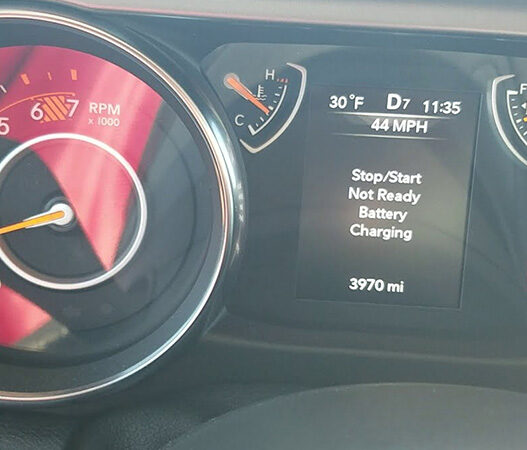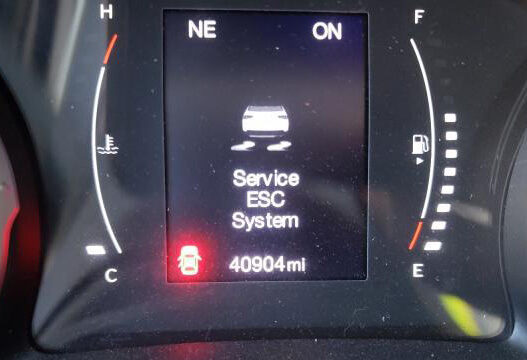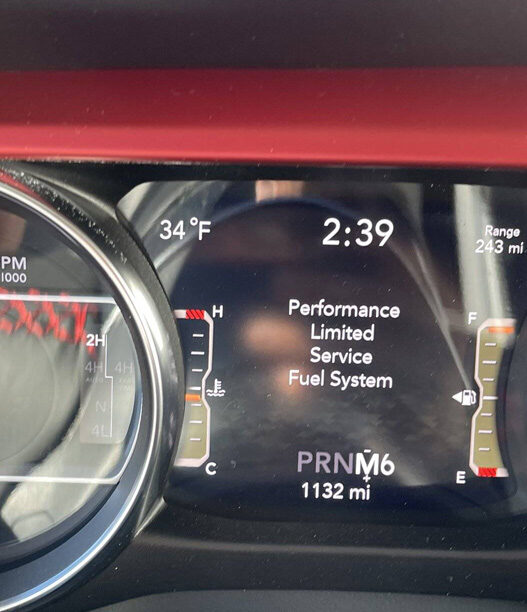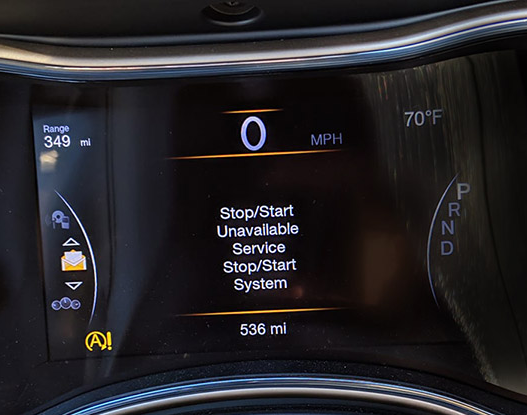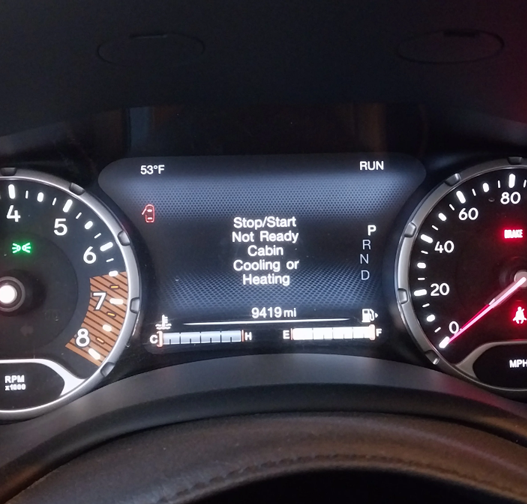You depend on your car’s advanced driver assistance systems to ensure your safety in challenging driving conditions. However, a sudden appearance of warning lights indicates that your ACC adaptive cruise control and FCW forward collision warning are not functioning at full capacity. ACC/FCW Limited Functionality Service Required .
The car’s alarms, beeps, and dashboard alerts notify you that these critical features, which are intended to maintain safe distances and prevent rear-end collisions, are experiencing limitations.
With the compromised functionality of these sophisticated safety systems, you feel vulnerable to potential hazards posed by distracted drivers.
Resolving the issue of limited functionality in the ACC/FCW entails a systematic troubleshooting process to identify and address any malfunctions in specific components such as electrical systems, sensors, software, or alignment. Targeted repairs are then carried out to restore the ACC and FCW to their optimal performance, thereby assisting in safe driving and accident prevention.
Let’s delve into the reasons behind this issue and explore the steps to rectify it!
The Main Functions of ACC and FCW
What does limited functionality of ACC/FCW entail? Adaptive cruise control (ACC) and forward collision warning (FCW) provide integrated safety features in modern vehicles to help prevent accidents. When operating at full capacity, here is how they function:
- ACC – Utilizes radar and cameras to monitor the distance to the vehicle ahead and adjusts the vehicle’s speed accordingly to maintain a consistent safety gap. This automated speed control ensures a safe and consistent following distance in traffic.
- FCW – Uses cameras, radar, and sensors to continuously scan the road ahead. If the system detects that the vehicle is approaching another vehicle or object too rapidly, it issues audible and visual alerts, giving the driver more time to react and helping to prevent rear-end collisions.
When working in conjunction, ACC and FCW enhance driving safety by automatically regulating speed and providing alerts about potential collision risks. However, due to the intricate electronics and the presence of multiple cameras and sensors, there is an increased risk of malfunctions.
ACC/FCW Limited Functionality Service Required: 5 Causes and Fixes
Here are six common issues that can temporarily disable the Adaptive Cruise Control (ACC) and Forward Collision Warning (FCW) systems in a Jeep, along with their fixes:
1. Sensor Blockage
The radars, cameras, and other sensors utilized by ACC and FCW are highly sensitive and can be negatively impacted by obstructions such as snow, ice, dirt, or debris, leading to a decrease in their ability to effectively monitor conditions and provide assistance. This can result in a limited functionality mode.
Troubleshooting
When troubleshooting ACC or FCW faults related to potential sensor obstructions, the initial step involves visually inspecting the sensor areas on the front and rear bumpers, windshield, grill, and radiator to detect any blockages. It is important to look for any accumulation of snow, ice, mud, leaves, packaging debris, or other foreign materials that may be covering the sensor surfaces partially.
Carefully remove any debris with a gentle touch using hands or a soft brush, being cautious not to apply pressure or touch the delicate sensor internals, as this action may restore functionality.
In cases where visual contamination is not apparent, a soft, lint-free cloth and vacuum with a brush attachment can be used to delicately wipe and remove dirt from the sensor surfaces. It is advised to avoid using scrapers, chemicals, or abrasive cleaning materials near the sensors, as they can potentially harm the precise alignment necessary for their proper functioning.
Solutions
To address recurring sensor blockages due to ice and snow accumulation in snowy climates, installing protective sensor covers tailored to fit over the sensors is recommended. These covers, which are weatherproof and custom-fit, help keep the imaging areas clear for extended periods.
They securely shield the sensors while remaining firmly in place even at high speeds, offering an affordable solution that eliminates the need for frequent manual snow removal.
This affordable solution saves having to continually clear snow manually.
If aggressive scraping or cleaning causes alignment issues or damage to the sensor internals, professional realignment or replacement of sensors may be required to resolve limited functionality problems. It is suggested to investigate whether the vehicle’s sensors feature a self-correction mechanism that automatically adjusts alignment periodically when the vehicle is parked overnight.
If this adaptive function cannot rectify the damage, sensor replacement along with calibration to the vehicle computers may be necessary.
Moreover, enhancing preventative maintenance washing schedules can aid in reducing the regular heavy buildup that necessitates manual cleaning.
2. Electrical Problems
Proper communication between vehicle computers and sensors can be hindered by electrical problems such as shorts or opens, which can arise from the intricate electronics and wiring connections in the system.
Electrical issues, such as blown fuses, loose connections, or faulty wiring, can disable the systems.
Troubleshooting
Intermittent electrical issues such as corroded connections, loose plugs, damaged wires, or short circuits within the wiring system can disrupt the crucial data connections between ACC and FCW components, impeding proper communication and functionality.
To address this, carefully examine visible wiring and connectors for signs of corrosion, damage, or twists. Check that the fuses for the ACC/FCW systems are intact and investigate any fault codes indicating specific sensor problems. Using a multimeter, test the continuity of the wiring between sensors and modules.
If no visible wiring problems are detected, systematically use the multimeter to trace the continuity between sensors and processing modules to pinpoint the location of any shorted or corroded connections.
Solutions
If any signs of damage are detected in the harness, it is important to fix or substitute the specific affected wiring sections. Deal with any root causes such as short circuits or overloads that necessitate changing fuses.
In cases where corrosion is widespread, it may be essential to replace the complete ACC/FCW wiring harness.
Even if there is no evident damage detected through multimeter testing, it can still help pinpoint the exact location of the fault for replacing the harness segment.
This method of identifying electrical faults significantly cuts down on expenses and the time lost compared to making general wiring repairs.
3. Component Failures
As with all electronic devices, the cameras, radar modules, controllers, and other components of the ACC and FCW systems will eventually deteriorate or stop working suddenly. If any essential part malfunctions, it will render the systems inoperative.
Troubleshooting
If ACC or FCW system malfunctions indicate a possible component problem, begin by thoroughly examining all associated cameras, radars, controllers, and wiring for any signs of visible damage.
Inspect the vehicle’s computer systems for any stored diagnostic trouble codes that specifically identify ACC/FCW components with errors or malfunctions.
Compare the operating temperatures and voltage levels of components with the manufacturer’s specifications to detect abnormal readings that may suggest a potential failure.
Test known-functioning replacement parts at sensor connections and module inputs to differentiate between faulty components and potential electrical problems in the wiring.
Solutions
If any ACC or FCW parts display obvious damage such as cracked casings or water damage, replace the damaged components promptly with new factory-approved parts.
For radar transmitter/receiver modules containing intricate internal electronics, send them to specialized facilities equipped with the necessary diagnostic tools to verify suspected internal malfunctions indicated by computer codes.
Updating the firmware of components showing parameter errors can also rectify functionality problems caused by software glitches rather than hardware issues.
4. Calibration Issues
The sensors or cameras may be misaligned or require recalibration, which can disable the systems.
Troubleshooting
The advanced cameras and radars necessary for ACC and FCW systems need to be accurately aligned in order to function effectively.
If your ACC/FCW system requires professional attention, try the reliable radar detector – Uniden R3 EXTREME Laser/Radar Detector which can provide an extra layer of safety on the road while you wait for repairs.
Over time, the positioning of sensors may be affected by road vibrations or minor damage caused by cleaning efforts, leading them to move beyond specified tolerances and causing functionality issues.
Identify the underlying reason for any potential sensor displacement resulting from damage or collisions at the front or rear. Thoroughly examine for any signs of impact such as cracked sensor housings.
Look for any error codes that may have been recorded indicating issues with sensor visibility range or alignment.
To test, temporarily shield sensors with non-reflective material to see if the operation of ACC/FCW is restored. If performance improves, it suggests a calibration misalignment rather than physical damage to the components.
Solutions
If troubleshooting indicates that sensors are experiencing visibility problems without any physical harm, it is probable that they simply require recalibration by a professional.
Precise radar and camera positioning essential for the proper functioning of ACC/FCW relies on costly alignment tools and procedures.
The sensors play a crucial role in providing depth, distance, and environmental mapping for advanced decision-making capabilities. Disrupting this accuracy can impair the processing.
In cases where sensors are damaged beyond repair through recalibration, it may be essential to replace them with new calibrated units.
Certain vehicle manufacturers offer guidelines for resetting sensor adaptation programming, which can realign the sensors after repairs without the need for a complete recalibration at a workshop.
5. Software Glitches
Software glitches or outdated software can cause the ACC and FCW systems to malfunction.
Certain fault code conditions indicating a system data error will trigger program exceptions and switch software to a fail-safe protected mode.

Troubleshooting Steps
In order to confirm that a software problem is the root cause of the issue:
- Conduct multiple tests to ensure proper functionality following the resets, before proceeding with additional troubleshooting steps.
- Look for any pending error codes associated with corrupted parameters or incorrect sensor information
- Reset the ACC/FCW systems by power-cycling to eliminate any temporary coding errors
- Refer to the automaker’s websites for the most recent software updates that resolve identified ACC/FCW issues
Solutions
If the functionality of ACC/FCW is being impacted by software corruption, it is recommended to install the latest software patches for ACC/FCW provided by the vehicle manufacturer. At the service center, technicians have the capability to conduct a complete system software reflash if diagnostic codes indicate data errors.
For older vehicles, replacing the ACC/FCW controller may be the sole hardware solution for specific program issues caused by corruption.
6. Weather Conditions
Adverse weather conditions such as heavy rain, fog, snow, or even extreme sunlight can interfere with the sensors and cameras of the Adaptive Cruise Control (ACC) and Forward Collision Warning (FCW) systems.
Troubleshooting
These systems rely on clear visibility and accurate sensor readings to function properly. When weather conditions obstruct or distort the signals, the systems may be temporarily disabled to avoid incorrect readings and potential safety risks.
Solutions
During adverse weather conditions like heavy rain, fog, snow, or intense sunlight, it is crucial to maintain and adjust your vehicle to ensure the Adaptive Cruise Control (ACC) and Forward Collision Warning (FCW) systems function correctly.
Regularly clean the sensors and cameras to remove water droplets, dirt, or ice, which can obstruct their performance. Use fog lights and sun visors to improve visibility and reduce glare. In environments with heavy dust or sand, clean the sensors frequently and consider protective covers to minimize abrasion.
Be prepared to manually control the vehicle’s speed and distance when these systems are impaired by weather, and always drive cautiously, understanding that such conditions can temporarily disable these safety features. Regular maintenance and proactive adjustments can help mitigate these issues and ensure your safety on the road.
Final Words
Although the limited capabilities of Jeep ACC/FCW service may cause concern, pinpointing the exact issue that is disabling the system enables quicker and cost-effective solutions. Common triggers for limited functionality alerts include blocked sensors, electrical malfunctions, damaged components, software glitches, and calibration requirements. However, a systematic troubleshooting approach helps identify the specific issue at hand.
Once the underlying cause is determined, targeted actions such as software updates, wire fixes, sensor maintenance, part replacements, and recalibration procedures can effectively address ACC/FCW issues. Restoring these sophisticated systems to full functionality not only enhances driver safety but also reinstates confidence in protection against distracted drivers.
Engaging in thorough discussions with technicians about repair choices and expenses can prevent unforeseen costs. Additionally, proactively maintaining vehicle systems through regular cleaning and inspections can help preemptively mitigate potential problems.












